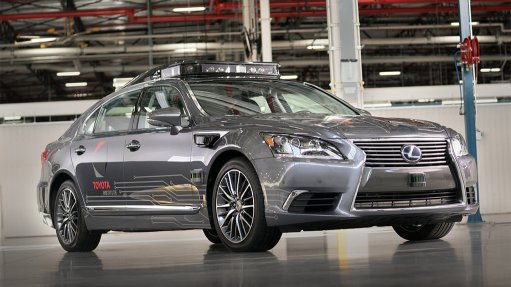
NEXT GENERATION Platform 3.0 is one of the most perceptive automated driving test cars on the road
Research and development enterprise Toyota Research Institute (TRI) presented Platform 3.0, its next-generation automated driving research vehicle, at January’s Consumer Electronics Show (CES) in Las Vegas, US.
The new platform is based on a Lexus LS 600h L and combines greater technological capabilities with harmonised styling that integrates the automated vehicle technology into the LS model’s design.
“To elevate our test platform to a new level, we tapped Toyota’s design and engineering expertise to create an all-new test platform that has the potential to be a benchmark in function and style,” says TRI CEO and multinational automotive manufacturer Toyota Motor Corporation fellow Gill Pratt.
TRI approached the development of the new research platform with three core principles in mind: elevate perception capabilities to be an industry pacesetter among automated vehicles; blend the sensing equipment into the vehicle design with a distinct appearance that is sleek and elegant; and package the automated vehicle technology in a manner that is easy to reproduce for building a fleet at scale.
Technology and Design
Platform 3.0 represents a maturing of TRI’s automated vehicle research. It has a sensor-rich package that makes it one of the most perceptive automated driving test cars on the road. The Luminar LiDAR system, which had only tracked the forward direction on TRI’s previous test platform, now covers the vehicle’s complete 360º perimeter. This is made possible by four high-resolution LiDAR scanning heads that precisely detect objects in the environment including notoriously difficult-to-see dark objects.
Shorter-range LiDAR sensors are positioned low on all four sides of the vehicle – one in each front quarter panel and one each on the front and rear bumpers. These can detect low-level and smaller objects near the car like children and debris in the roadway. The new platform remains flexible for incorporating future breakthrough technology as it becomes available.
TRI engaged the expertise of Toyota design studio Calty Design Research and engineers at Toyota Motor North American Research and Development Purchasing and Prototype Development Centre to compact and conceal the sensors and cameras.
“Automotive designers’ roles have been pivoting toward thinking deeper and greater on how to design and apply automated driving technology for drivers and passengers,” says Calty Design Research senior lead designer Scott Roller.
Production
Production of Platform 3.0 will begin in March and the cars will be created from stock Lexus LS models.
Production volume is intentionally low to allow for continued flexibility given the quickness with which TRI has progressed in updating its test platform. There have been three major updates, including two new generation test models, in less than a year, and TRI anticipates continued rapid developments.
A share of the new test vehicles will be assembled with the dual cockpit control layout that TRI debuted in September last year. This arrangement is for testing TRI’s Guardian approach to automated driving, experimenting with effective methods to transfer vehicle control between the human test driver and the automated system while maintaining a safety driver as a backup. Single cockpit vehicles, like the one on display at CES, are used to test Chauffeur, which is TRI’s approach to full vehicle automation.
Both Guardian and Chauffeur test vehicles use the same technology stack of sensors and cameras and similar software.